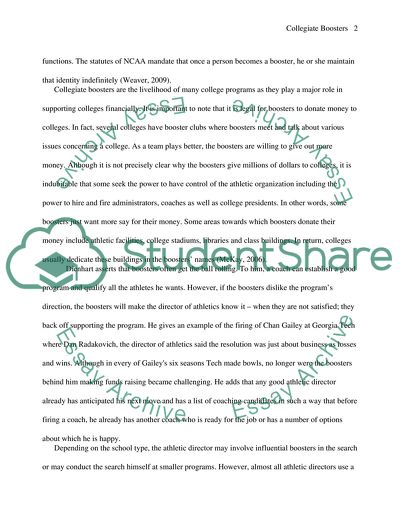Cite this document
(“Impact of Boosters on Collegiate Athletics Essay”, n.d.)
Impact of Boosters on Collegiate Athletics Essay. Retrieved from https://studentshare.org/sports-and-recreation/1559450-impact-of-boosters-on-collegiate-athletics
Impact of Boosters on Collegiate Athletics Essay. Retrieved from https://studentshare.org/sports-and-recreation/1559450-impact-of-boosters-on-collegiate-athletics
(Impact of Boosters on Collegiate Athletics Essay)
Impact of Boosters on Collegiate Athletics Essay. https://studentshare.org/sports-and-recreation/1559450-impact-of-boosters-on-collegiate-athletics.
Impact of Boosters on Collegiate Athletics Essay. https://studentshare.org/sports-and-recreation/1559450-impact-of-boosters-on-collegiate-athletics.
“Impact of Boosters on Collegiate Athletics Essay”, n.d. https://studentshare.org/sports-and-recreation/1559450-impact-of-boosters-on-collegiate-athletics.


